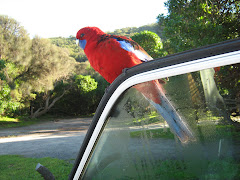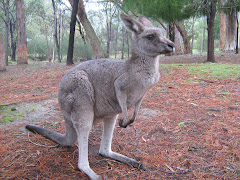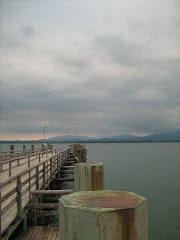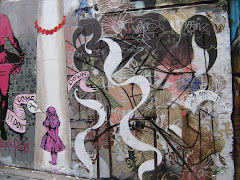Happy Birthday Harry Potter! Even though I was a bit sad to realize that the boy who can do magic actually turned twenty this year – am I really that old already? – I am very glad to have the books in my life. Congratulations J.K. Rowling, I feel that most of the positive reviews are actually well earned (albeit there are many mistakes – I personally am most bugged by two, but see below for that). My daughter also loves your story which is why we discussed the centaurs in the Forbidden Forest the other day.
Being very young and having recently had a baby brother, she innocently asked me whether there are also women centaurs. And if there were, how would they feed their babies – the horse or the human style? Initially I just found this a funny thing a child would say. Yet, when I thought about it I wondered how the centaurs actually come into this life. Are there female centaurs, or, centaurides who are not allowed a part in the Harry Potter saga? Or are they offsprings of an alliance between humans and horses? And if so, is it a male human being who...?
Well, I realize this is not important for the beatiful narration at all. Maybe they are just magically created. Or have always been there. I just have not been able to stop getting back to the question of origin since my daughter asked me.
(As for the mistakes, I am most bothered by...
1. the fact that the job of defence against the dark arts teacher is said to be jinxed in book 6. Dumbledore explains to Harry that he could never find a teacher who stayed for more than 1 year after Voldemort had asked for the post. However, when Hagrid introduces Professor Quirrell in book 1 he says that he took a year off and has never been the same after that. So he must have stayed for at least two years in total – yes, with a break, but still...
2. the changing height of the tunnel under the Weeping Willow in book 3. When Harry and Hermione enter it for the first time they have to bend almost double to get to the Shrieking Shag. We later learn that the tunnel was big enough for a werewolf in the past, though. On the way back Sirius even lets Professor Snape float in the air. In the tunnel Snape's head merely keeps bumping on the ceiling. So how low is this tunnel supposed to be?)
Being very young and having recently had a baby brother, she innocently asked me whether there are also women centaurs. And if there were, how would they feed their babies – the horse or the human style? Initially I just found this a funny thing a child would say. Yet, when I thought about it I wondered how the centaurs actually come into this life. Are there female centaurs, or, centaurides who are not allowed a part in the Harry Potter saga? Or are they offsprings of an alliance between humans and horses? And if so, is it a male human being who...?
Well, I realize this is not important for the beatiful narration at all. Maybe they are just magically created. Or have always been there. I just have not been able to stop getting back to the question of origin since my daughter asked me.
(As for the mistakes, I am most bothered by...
1. the fact that the job of defence against the dark arts teacher is said to be jinxed in book 6. Dumbledore explains to Harry that he could never find a teacher who stayed for more than 1 year after Voldemort had asked for the post. However, when Hagrid introduces Professor Quirrell in book 1 he says that he took a year off and has never been the same after that. So he must have stayed for at least two years in total – yes, with a break, but still...
2. the changing height of the tunnel under the Weeping Willow in book 3. When Harry and Hermione enter it for the first time they have to bend almost double to get to the Shrieking Shag. We later learn that the tunnel was big enough for a werewolf in the past, though. On the way back Sirius even lets Professor Snape float in the air. In the tunnel Snape's head merely keeps bumping on the ceiling. So how low is this tunnel supposed to be?)
Sources
Above referred to as book 1, 3
and 6:
1. J.K. Rowling. Harry Potter and the Philosopher’s Stone.
London: Bloomsbury, 2000.
3. J.K. Rowling. Harry Potter and the Prisoner of Azkaban.
London: Bloomsbury, 2000.
6. J.K. Rowling. Harry Potter and the Half-Blood Prince. London:
Bloomsbury, 2005.







Keine Kommentare:
Kommentar veröffentlichen